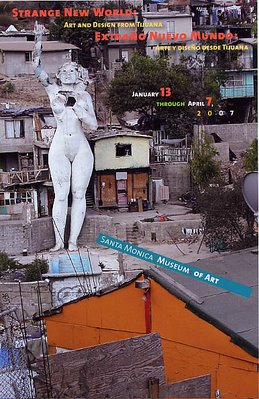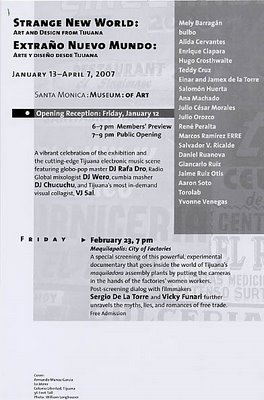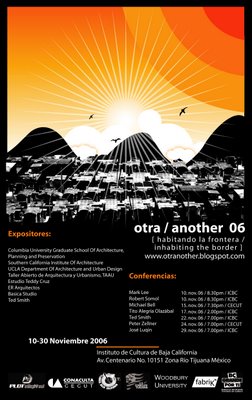Imagenes del “desarrollo” urbano en Dubai de 1995 al 2005- de la pagina Urban Planet de la BBC.
Category: Uncategorized
On the left the aircraft carrier USS Midway Museum docked in
Panacean Landscapes
Within the vastness and depth of the Pacific Ocean,
On the left the aircraft carrier USS Midway Museum docked in
Panacean Landscapes
Within the vastness and depth of the Pacific Ocean,
Acuerdo Migratorio
Con el boom inmobiliario en la costa del baja triangle (Tijuana- Rosarito-Ensenada) – los mexicanos no tendrán que cruzar ( legal o ilegal) a Estados Unidos a cortar el pasto del gringo – ahora se lo van a cortar en México!
Thanks to the silent invasion of the baby-boomers from the north, however, much of the natural history and frontier culture of Baja could be swept away in the next generation. One of the world’s most magnificent wild coastlines could be turned into generic tourist sprawl, waiting for Dunkin’ Donuts to open. Locals, accordingly, have every reason to fear that today’s mega-resorts and mock-colonial suburbs, like FONATUR’s entire tourism-centered strategy of regional development, are merely the latest Trojan horses of Manifest Destiny.
Mike Davis
http://www.tomdispatch.com/index.mhtml?pid=122537
Otra/Another – Habitando la Frontera / Inhabiting the Border
en el blog
otranother.blogspot.com
Otra/Another – Habitando la Frontera / Inhabiting the Border
en el blog
otranother.blogspot.com







